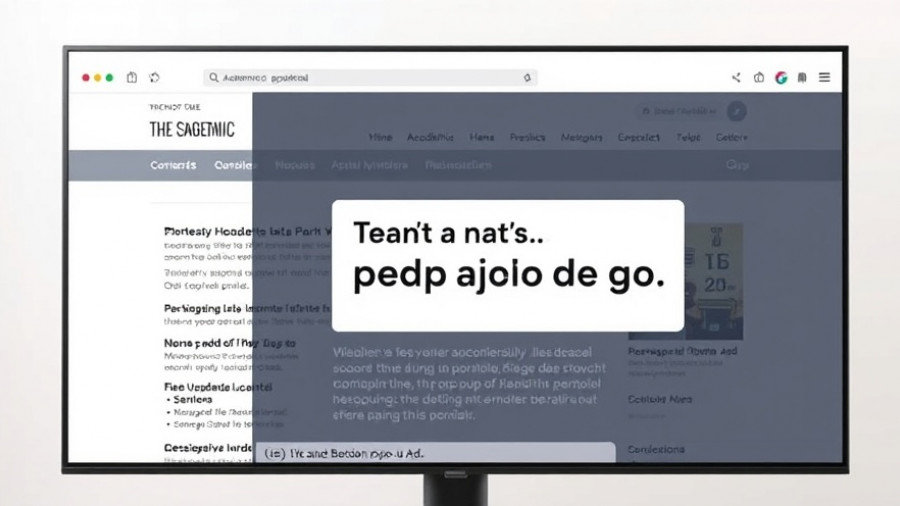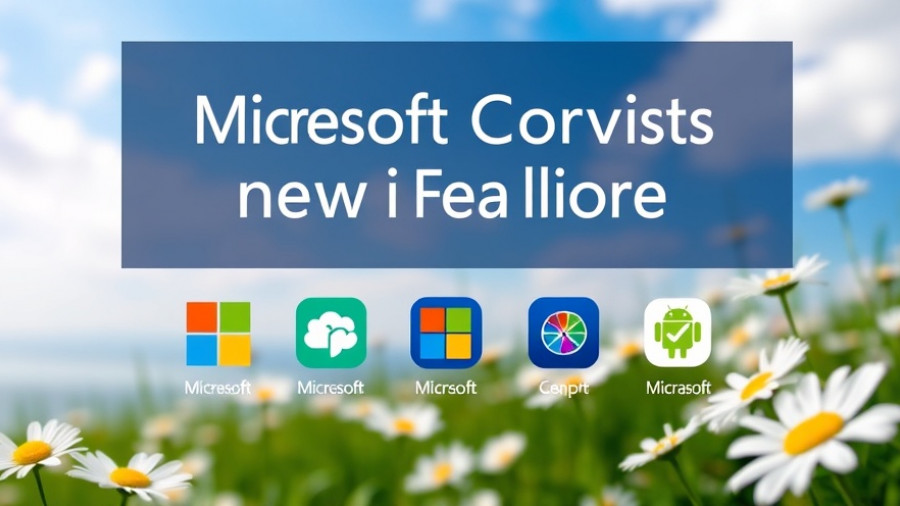
The Rise of AI in Sports Predictions: A Game Changer for NFL Fans
This week, as the NFL plunges deeper into the thrilling season, Microsoft Copilot AI has once again showcased its prowess in predicting game outcomes. With a strong track record of 39-24-1 thus far, the AI model stands as a testament to how artificial intelligence is reshaping the landscape of sports analytics.
How Microsoft's AI Copilot Makes Predictions
The approach adapted by Copilot for Week 5 involves interpreting prompts to forecast winners and scores. The AI outputs are based not only on team performance metrics but also on injury reports, historical data, and contextual factors like player conditions. For instance, Copilot's ability to assess injuries influenced its pick of the Los Angeles Rams over the San Francisco 49ers this week. Injuries to key players like Brandon Aiyuk and George Kittle created doubts about the 49ers' capability to compete effectively.
Cops Versus the Odds: AI vs. Human Analysts
As AI-driven predictions gain popularity, they're beginning to compete with seasoned sports analysts. Despite sometimes producing outdated information, Copilot's analytical capabilities allow it to dive deep into various metrics and offer well-rounded insights. For instance, in analyzing the Minnesota Vikings' matchup against the Cleveland Browns, Copilot leaned heavily on Carson Wentz's impact on the Vikings offense. However, human analysts caution against putting too much faith in a single player's performance, notedly the Vikings’ ongoing challenges with a shaky offensive line.
Success Rates: AI vs. Traditional Prediction Models
Currently, Copilot boasts a successful run, evident from its previous weeks racking up 11-win and 9-win records. Still, it’s essential to note that AI predictions aren't infallible; the challenge often lies in timely updates, particularly regarding injuries and player fitness. The reference made to the challenges faced in interpreting real-time data highlights the need for better integration between human judgment and AI capabilities.
What This Means for Betting
As the NFL season progresses, Copilot serves as a tool for those looking to place bets but should be used with caution. The ability to synthesize vast amounts of data can assist bettors in making informed choices — like picking the Indianapolis Colts to beat the Las Vegas Raiders, given Jonathan Taylor’s early season performance and the Colts' strong defense. However, gamblers need to maintain a critical eye and not rely entirely on AI predictions, as unpredictable factors often impact game outcomes.
Trends and Future Predictions: What Lies Ahead
Looking ahead, we can expect AI to further redefine how fans engage with sports. This week, predictions show a competitive slate, and AI's input is increasingly becoming a regular part of strategic betting discussions. Teams like the Bills, Colts, and Rams are prime examples where analytics can provide an edge. But as always, the unpredictability of sports keeps fans and analysts alike on their toes.
Conclusion: The Balance of Tradition and Technology
The intersection of AI and sports prediction marks a significant transition in how fans and bettors alike engage with the NFL. As Microsoft Copilot AI continues to evolve, its role as a trusted companion for predictions will depend on its adaptability to real-time data and its ability to provide accurate, timely insights. For gamblers and fans alike, understanding the nuances of AI predictions will enhance their experience as the season unfolds.
 Add Row
Add Row  Add
Add 




Write A Comment